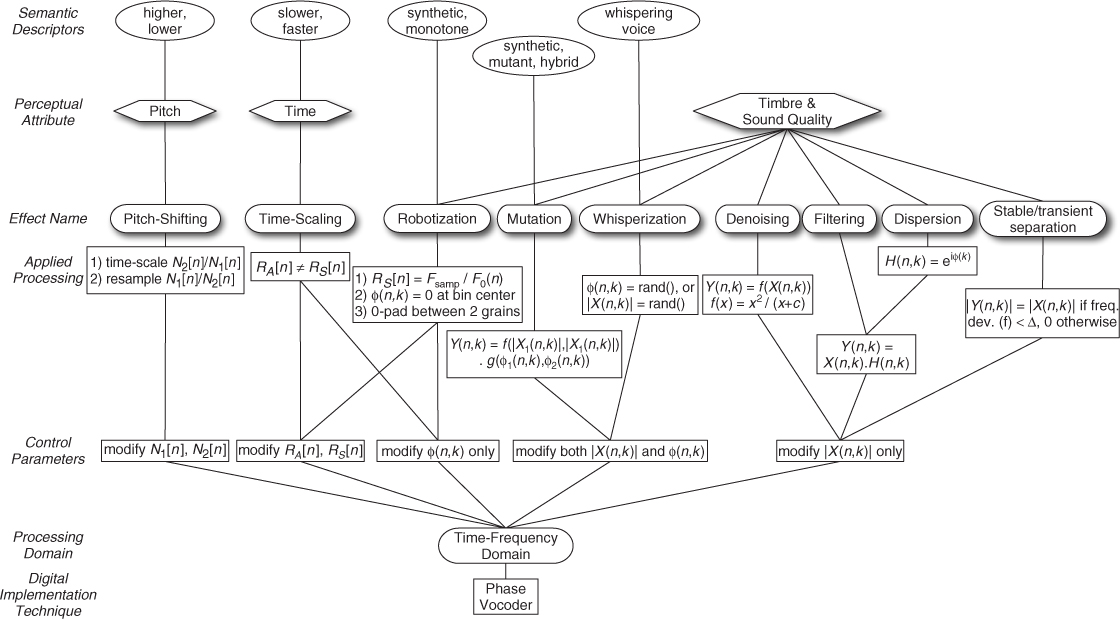7.4 Phase Vocoder Effects
The following subsections will describe several modifications of a time-frequency representation before resynthesis in order to achieve audio effects. Most of them use the FFT analysis followed by either a summation of sinusoids or an IFFT synthesis, which is faster or more adapted to the effect. But all implementations give equivalent results and can be used for audio effects. Figure 7.19 provides a summary of those effects, with their relative operation(s) and the perceptual attribute(s) that are mainly modified.
Figure 7.19 Summary of time-frequency domain digital audio effects, with their relative operations and the perceptual attributes that are mainly modified.

7.4.1 Time-frequency Filtering
Filtering a sound can be done with recursive (IIR) or non-recursive (FIR) filters. However, a musician would like to define or even to draw a frequency response which represents the gain for each frequency band. An intuitive way is to use a time-frequency representation and attenuate certain zones, by multiplying the FFT result in every frame by a filtering function in the frequency domain. One must be aware that in that case we are making a circular convolution (during the FFT–inverse FFT process), which leads to time aliasing, as shown in Figure 7.20. The alternative and exact technique for using time-frequency representations is the design of an FIR impulse ...
Get DAFX: Digital Audio Effects, Second Edition now with the O’Reilly learning platform.
O’Reilly members experience books, live events, courses curated by job role, and more from O’Reilly and nearly 200 top publishers.

